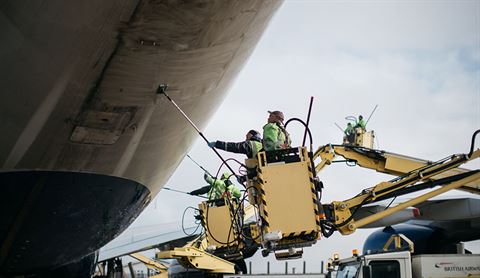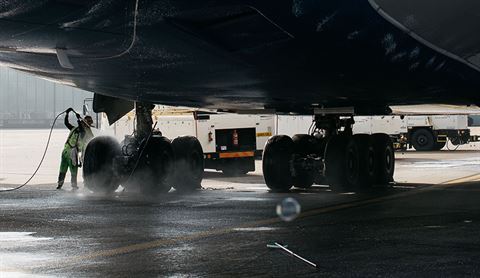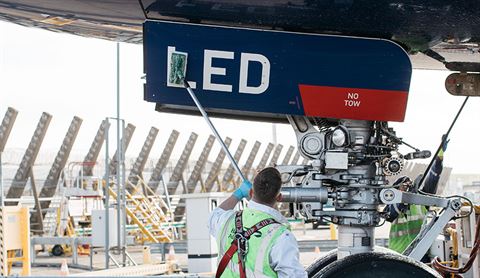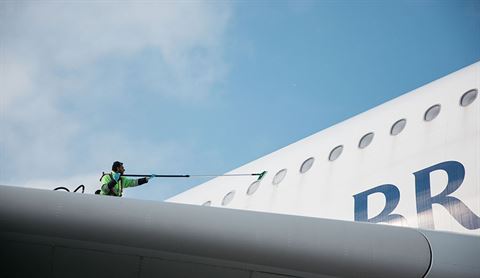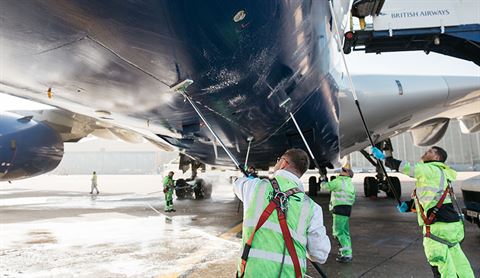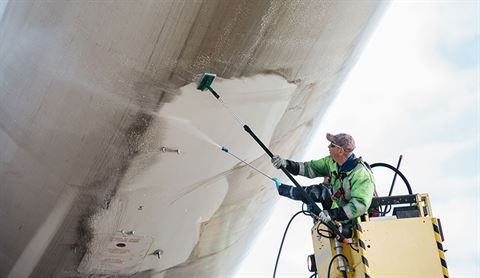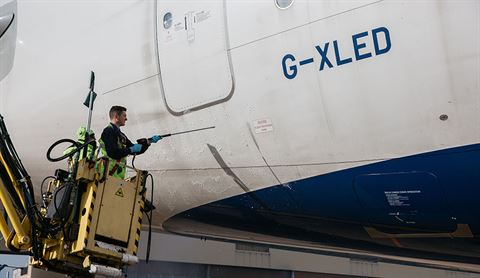BA PEOPLE • September 2019
How do you... wash an A380?
In his position as British Airways’ Aircraft Appearance and Winter Operations Manager, Dale Walsh is one member of the Heathrow team responsible for keeping the outside of the fleet squeaky clean. And by keeping them dirt-free, it not only makes them prettier to look at, but also reduces the amount of fuel they use in flight
What exactly do you do?
We’re the Aircraft External Appearance team – the people with the hoses and brushes who wash planes. We have 63 people in our team, but the actual wash process involves lots of coordination with several other teams.
How do you decide which planes need washing?
The wash cycle is 45 days for narrow-body and 60 for wide-body aircraft because of the take-off frequency, but if we see a dirty plane we’ll wash it, if we can access it. At 8am every day, we’ll send a list of our top 20 ‘most wanted’ aircraft (i.e. those due a wash) to the planners, who’ll send back a list of any they think will be available. We’ll pencil them in, but nothing’s definite because an aircraft’s route can change at short notice. Even on the planned wash day we have to contact Engineering in the early hours to check all is going to plan.
What’s required for the wash itself?
We have five lorries with cherry pickers, the newest of which go up to 32 metres and were bought especially for the Airbus A380. We park two at the front of the aircraft and three at the back, and work from the top down. Around 15 people will clean an A380. The wash vehicles each hold 6,000 litres of water and 2,000 litres of a special citrus-based soap. The entire wash takes 25,000 litres of water, which is recycled on site.
What are the main obstacles to overcome?
Getting time with the aircraft is the biggest challenge, and the discolouration from atmospheric dust plus the jetty marks around the doors are quite stubborn. We can’t work in high winds or below 3°C, but otherwise the work carries on whatever the weather. We have to make the most of the aircraft’s ground time and hope it isn’t called back into the operation halfway through. In case that happens, we always clean one side of the plane at a time.
How long does it take to wash?
Think how long it takes to wash a car and scale it up… In an ideal world, we’d have up to 11 hours to wash an A380. But it needs 45 minutes’ towing time, as well as arrival and departure preparations, so that doesn’t always leave a lot of time for us to wash the world’s largest passenger aircraft.
Just how dirty do planes get?
The more take-offs and landings they make, the dirtier they become. With our worldwide network, aircraft are exposed to all types of weather conditions, from the hottest to the coldest and the wettest to the driest. You can tell where an aircraft has been by what colour the dirt is. Planes from Australia tend to come back a reddy-brown, those caught in monsoon rain have a dirty streak, and if an aircraft gets caught in a dust storm in Dubai, it returns a pale yellow.
More from previous issues
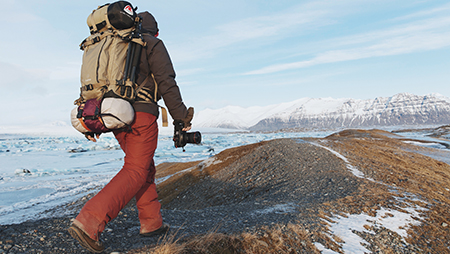
Exclusive Club offers
Win a signed England Rugby shirt, over £300 worth of photography gear, an overnight hotel stay in York; plus enjoy a discount on London's chicest afternoon tea and more
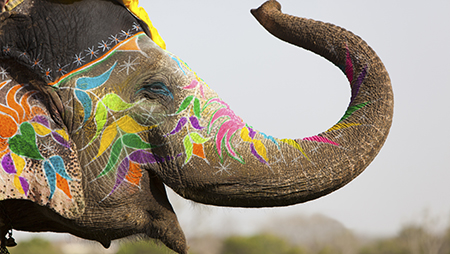
India for every traveller
When you step off the plane, India can overload the senses, but jump on a train and you’ll find delights like nowhere else on earth
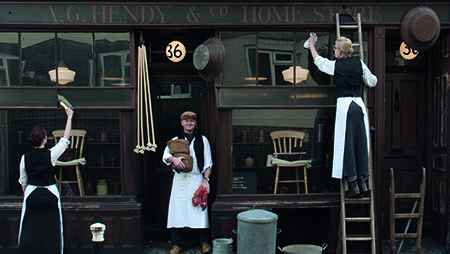
Ten of the most wonderfully British shops
Patriotic shop: we set off on the hunt to bring you the greatest British shops with character and charm to spare
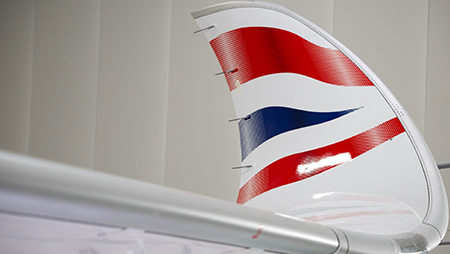
Airbus A350: A beginner’s guide
British Airways' very first A350-1000 has emerged from the paint shop, featuring an all-new Club Suite. Here's everything you need to know

